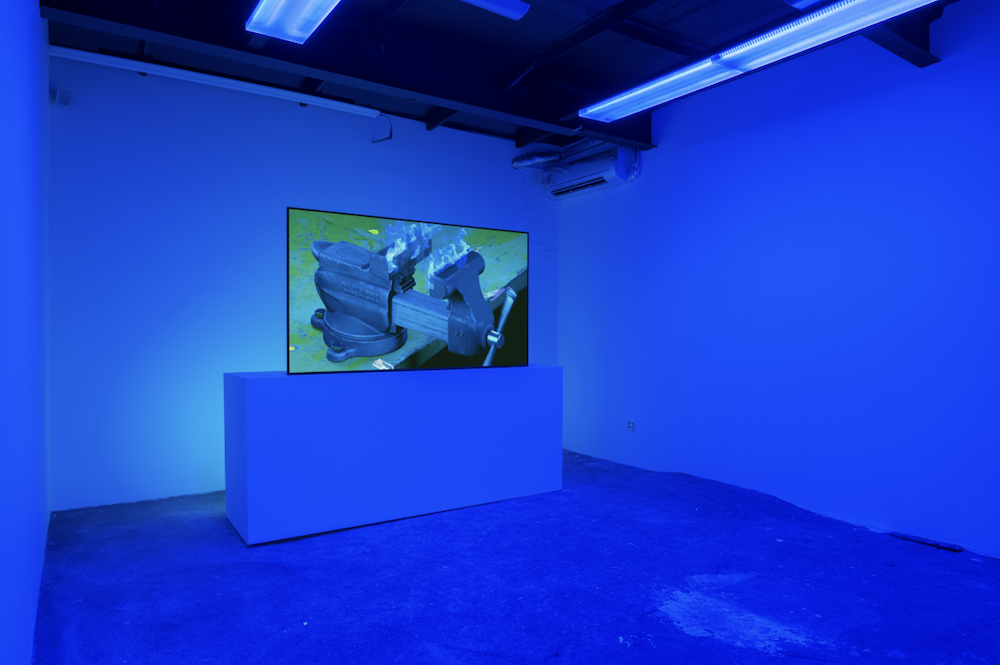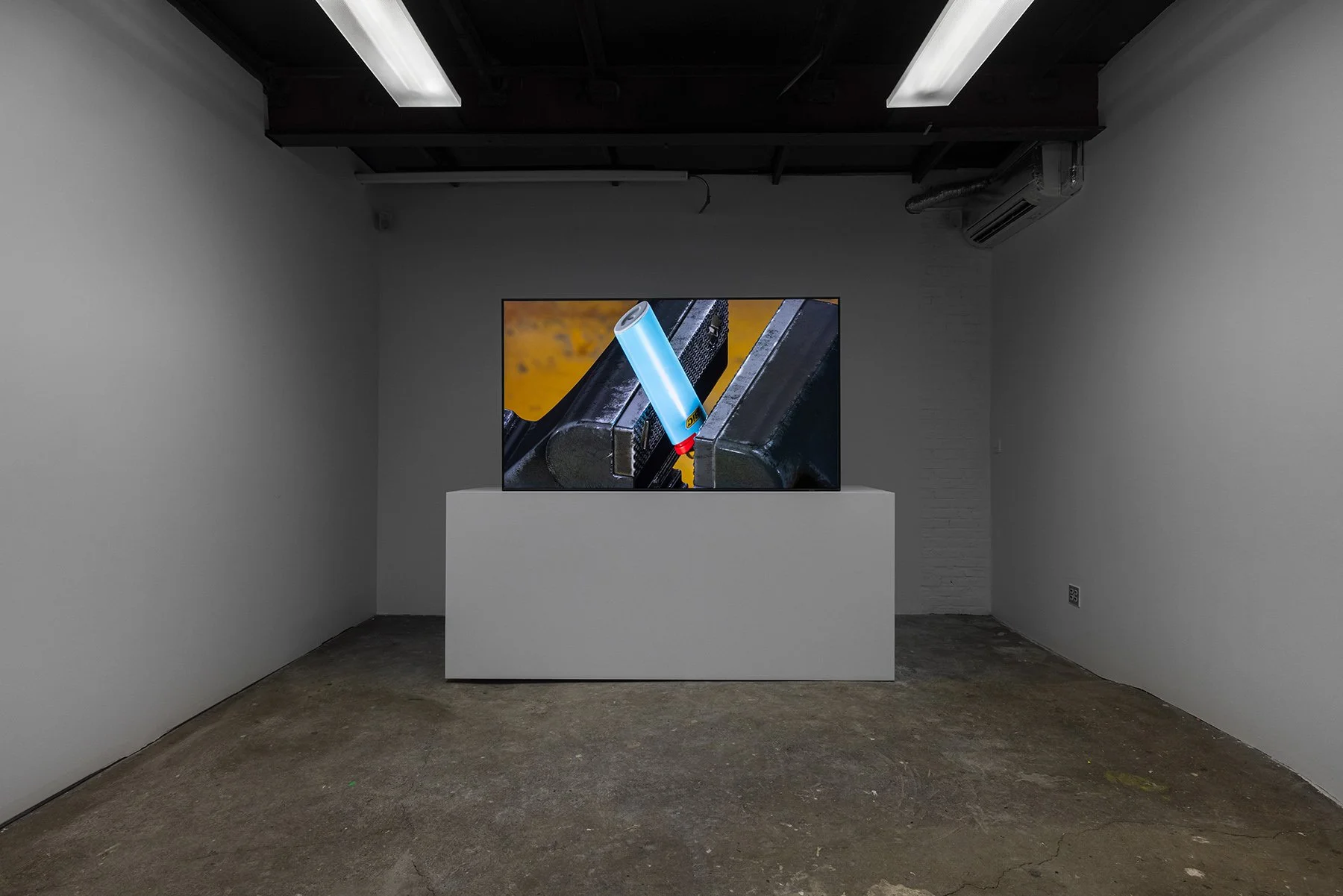Gregory Kalliche’s “Anvil”: a Digital Gesamtkunstwerk
It is fascinating to observe how systems are gradually permeating the landscape of technologically infused art in contemporary galleries. By “systems,” I mean mechanisms that leverage software to coordinate multimodal operations—apparatuses that control sound, video, light, motion, or smell according to predetermined scripts or viewer interactions.
Though systems appear to be having a comeback, it's important to recognize that elaborate contraptions taking advantage of various technologies is nothing new. The concept of combining different art forms into a cohesive whole traces back to Richard Wagner's notion of the Gesamtkunstwerk (the Total Work of Art). In the 19th century, Wagner's exemplar was opera, which unified set design, stagecraft, drama, lighting, and music. In 2025, works like Mark Fingerhut's Halcyon.exe: The Ride, Karyn Nakamura's Surface Tension, and Gregory Kalliche's Anvil reimagine the Gesamtkunstwerk for the digital age.
Described by Kaje’s Assistant Director Elizaveta Shneyderman as “a site-responsive commission,” Kalliche's Anvil features “a 3D-modeled and animated video accompanied by a synchronized lighting program and multi-channel sound component, as well as a group of layered animation cels.” Though the video's central operation involves a table vise crushing various objects, the viewing experience is utterly captivating. Consider one sequence: a metallic crescendo builds as a blue Bic lighter bounces between the vise's jaws until it's finally crushed and explodes, triggering white strobe effects from behind the monitor and transforming the gallery's ceiling lights to a saturated blue that bathes the white-box space, mirroring the semi-transparent blue flames left on the vise's jaws. And that is only about 20 seconds of Kalliche's 5:18-minute theater of video, sound, and light.
While it's valuable to consider systems like Anvil alongside the Gesamtkunstwerk concept, their crucial differences must be acknowledged. Critics of the Gesamtkunstwerk have noted how its aim to create a unified, immersive experience transcending individual elements can harbor an authoritarian impulse. Scholars like Éric Michaud and Matthew Smith have demonstrated how the Wagnerian Gesamtkunstwerk was co-opted by Nazi policies and propaganda to unify Germans into a homogeneous political body befitting a totalitarian state. Hannah Arendt observed that “the ideal subject of totalitarian rule is not the convinced Nazi or the convinced Communist, but people for whom the distinction between fact and fiction (i.e., the reality of experience) and the distinction between true and false (i.e., the standards of thought) no longer exist”—precisely the distinction that the Gesamtkunstwerk's immersive qualities can be weaponized to blur.
In contrast to employing Gesamtkunstwerk tactics to conflate fact and fiction, Kalliche's Anvil creates an alternative reality altogether—one where physics is contested, time flows non-linearly, and capitalist logic is subverted. Entering the gallery where Kalliche's video loops, viewers always encounter Anvil in media res. With blackouts between scenes and no title cards, the work's temporal sequencing remains deliberately obscure. Even after multiple viewings, one can only guess at the video's starting point. After timing the blackouts, I tentatively determined that the scene where the blue Bic lighter flies around marks the beginning, though thematically, the scene where the camera zooms in on the vise's handle ticking like a clock hand seems a more logical opening.
Anvil's warping of time echoes its broader break with physical constraints. As Shneyderman notes, the computer-generated imagery abandons “indexical reality in order to replace, extend, and build on it via uncanny simulations that appear convincing despite their impossible properties.” Most significantly, Anvil dispenses with two foundational structures of our reality: gravity and the myth of the American Dream. Operating like a clock that repeatedly and indiscriminately crushes mass-produced artifacts—Bic lighters, ping pong balls, stress-relief balls—the “made in U.S.A.” labeled vise functions as a hellish allegory of American capitalism. Yet in Anvil's world, where even the absence of gravity won't spare objects from the vise, being crushed isn't a final state. The squashed items emerge transformed rather than deformed: a smiley stress-relief ball flies from the vise's jaws with synthetic hair growing across the screen into pulsing white streaks of electric lines, suggesting spiritual transcendence; a ping pong ball becomes an emanating light source coloring the frame with warm orange hues; coal explodes under the pressure of the vise into infinite shiny diamonds.
Though Anvil offers an immersive experience, it doesn't attempt to sell viewers on a believable image. Instead, it presents a surreal digital simulation that somehow feels more authentic than reality. Even the work's most hopeful moment—when a safety pin's tip resists the closing vise until it breaks—registers as merely a system glitch, since the vise immediately repairs itself. And somehow that still feels hopeful, because it feels true. Anvil does not ask us to ignore the vise, nor does it promise us that we can escape the vise's jaws or resist them. Rather it shows us that even if we are crushed right now, this does not mean it is the end.
Gregory Kalliche: Anvil is on view at Kaje from May 10th to June 8th, 2025.





